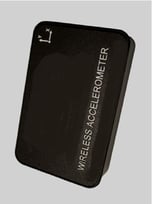 CHALLENGE
CHALLENGE
A manufacturer of vibrating feeder equipment was purchasing a private-labelled off-the-shelf Bluetooth Low Energy enabled accelerometer. The supplier was unable to keep up with product demand and had raised the price significantly. A lower cost solution was needed.


 CHALLENGE
CHALLENGE CHALLENGE
CHALLENGE
